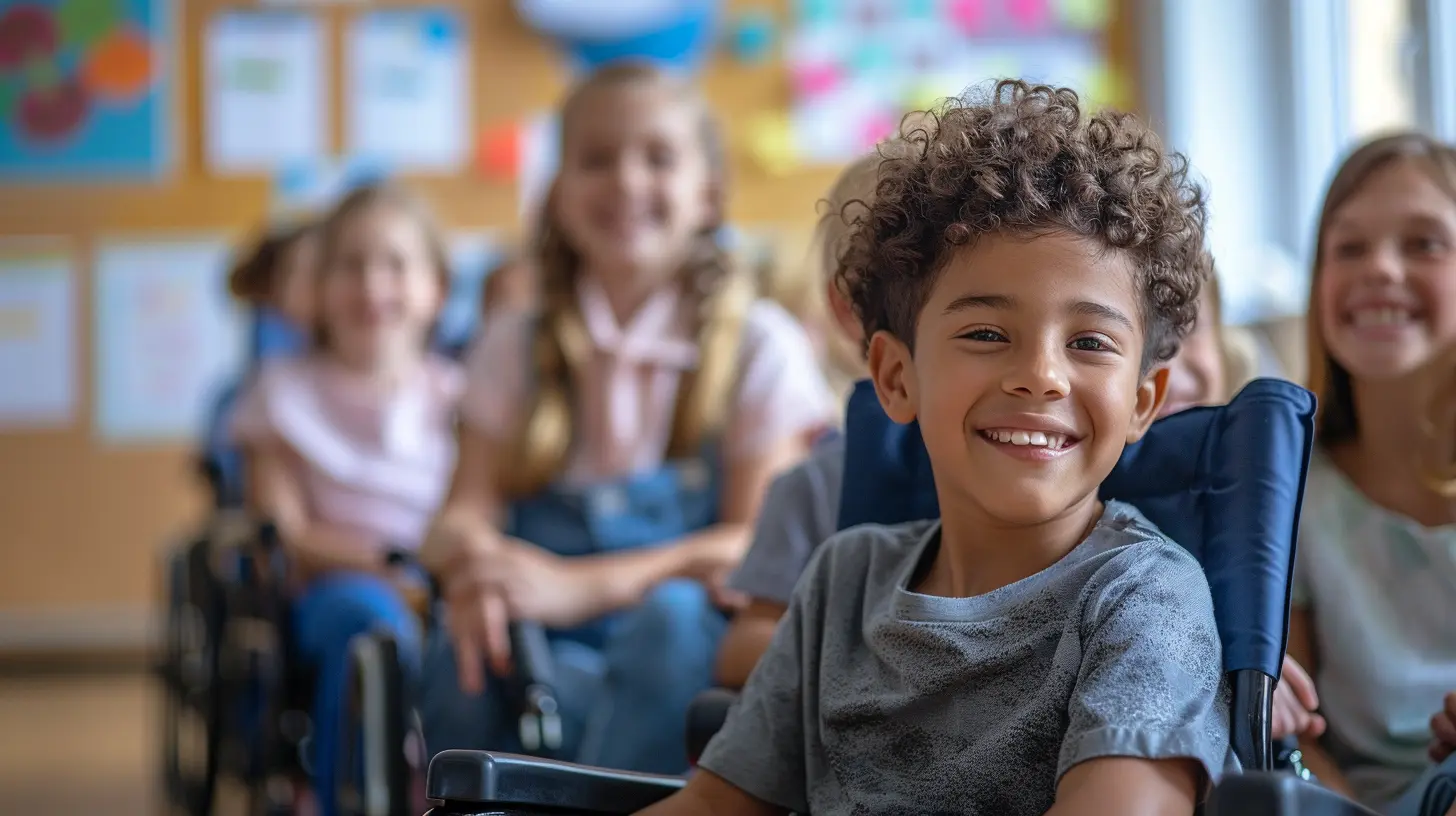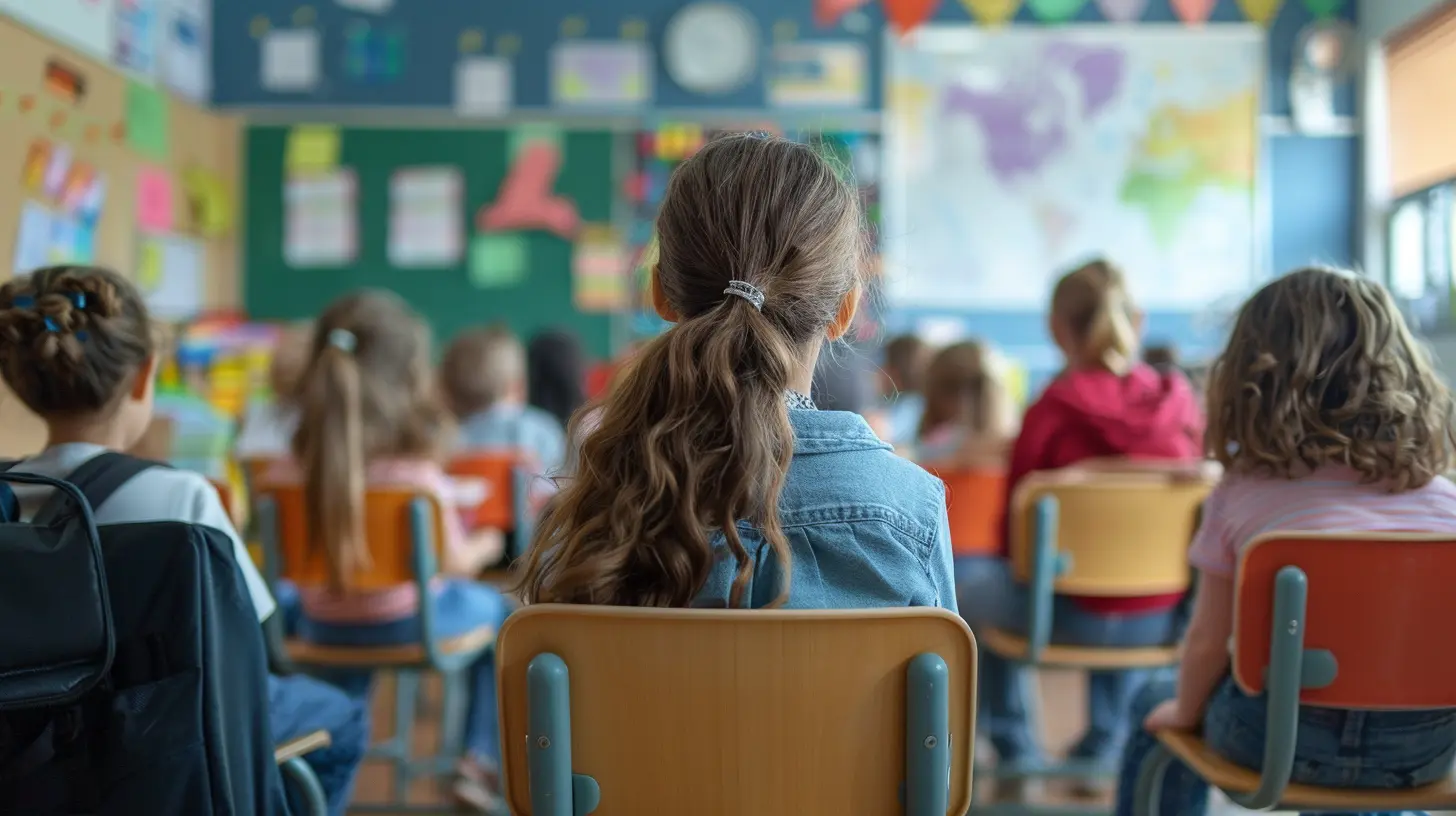The Benefits of Co-Teaching in Inclusive Classrooms
21 July 2025
Inclusive classrooms are changing the way students learn, making education more accessible to everyone. But let’s be honest—teaching in an inclusive setting can be a challenge. That’s where co-teaching steps in. When two educators share the responsibility of teaching a group of diverse learners, magic happens. But what exactly makes co-teaching so effective? And why should schools embrace this approach? Let’s dive deep and uncover the real benefits of co-teaching in inclusive classrooms.

What is Co-Teaching?
Before we dive into the benefits, let's define co-teaching. Co-teaching is a collaborative instructional approach where two teachers—typically a general education teacher and a special education teacher—work together in the same classroom. They plan, teach, and assess students as a team, ensuring that all learners, including those with special needs, receive the support they need.But co-teaching isn’t just about having two adults in the same room. It’s about shared responsibility, mutual respect, and a joint commitment to student success.

Why Inclusive Classrooms Matter
Inclusive education is about teaching all students together, regardless of their abilities or challenges. Instead of separating special education students, inclusive classrooms bring everyone under one roof, promoting diversity and equality.This approach fosters a sense of belonging, reduces stigma, and encourages all students to learn from each other. When done right, inclusive classrooms prepare students for the real world, where people of all abilities work together.
So, where does co-teaching fit into this? Well, co-teaching makes inclusive education more effective, manageable, and engaging for both students and teachers. 
The Benefits of Co-Teaching in Inclusive Classrooms

1. Better Student Support and Differentiation
Let’s face it—every student learns differently. Some grasp concepts quickly, while others need more time or different instructional strategies. With two teachers in the room, students benefit from:- More personalized instruction
- Greater attention to individual needs
- Different teaching styles that cater to diverse learners
In a traditional classroom, one teacher might struggle to meet the needs of 25+ students. But with co-teaching, one teacher can lead while the other offers targeted support—whether that’s breaking down concepts for struggling students, offering enrichment for advanced learners, or providing behavioral support.
2. Increased Engagement and Participation
Let’s be honest—when students feel supported, they engage more. Co-teaching allows for more interactive lessons because:- Teachers can use creative teaching methods, like role-playing, discussions, or hands-on activities.
- There’s less downtime, as two educators can manage transitions smoothly.
- Students receive more one-on-one interaction with teachers.
Think about it this way: Imagine a classroom as a lively conversation. If only one person talks, engagement fades. But when two teachers bounce ideas off each other, ask questions, and bring different perspectives, the lesson becomes more dynamic and engaging.
3. Better Behavior Management
Let’s not sugarcoat it—classroom management is tough. But with co-teaching, two teachers can tag-team to:- Redirect disruptive behavior more effectively
- Address conflicts quickly
- Provide emotional support to struggling students
While one teacher delivers instruction, the other can monitor student behavior and intervene when necessary, ensuring the classroom remains a positive and focused learning environment.
4. Stronger Teacher Collaboration and Professional Growth
Teaching can feel isolating, but co-teaching fosters teamwork and continuous learning. When educators collaborate, they:- Share ideas and teaching strategies
- Learn from each other’s strengths
- Support each other in handling classroom challenges
It’s like having a workout buddy—when one person struggles, the other steps in to help. Over time, this collaboration improves teaching practices and professional development, making both educators more effective.
5. Higher Student Achievement
At the end of the day, the goal of education is student success. Research shows that co-teaching leads to higher academic achievement, particularly for students with special needs.Why? Because when students receive more support, diverse teaching methods, and increased engagement, they understand and retain information better. Whether it’s mastering math equations or improving reading comprehension, co-teaching can boost overall learning outcomes.
6. Encourages Peer Learning and Social Skills
In an inclusive classroom, students learn not just from teachers, but from each other. Co-teaching encourages:- Collaboration among students of all abilities
- Opportunities for peer tutoring and group learning
- Improved communication and teamwork skills
When students see their teachers working as a team, they model that same behavior. This builds a classroom culture of respect, cooperation, and inclusion, preparing students for social interactions beyond school.
7. Reduces Teacher Burnout
Teaching is rewarding, but it’s also exhausting. Between lesson planning, grading, and managing a diverse classroom, burnout is real. Fortunately, co-teaching:- Shares the workload
- Provides emotional and professional support
- Makes teaching more enjoyable and less stressful
Having a co-teacher means you’re not alone—there’s always someone to help troubleshoot challenges, celebrate victories, and offer perspective.
8. More Flexible and Adaptive Teaching Methods
One of the biggest benefits of co-teaching? Flexibility. Teachers can experiment with different teaching models, such as:- Parallel Teaching: Splitting the class into two smaller groups for more direct instruction.
- Alternative Teaching: One teacher provides extra support to a small group while the other teaches the main lesson.
- Station Teaching: Rotating students through different learning stations, each led by a teacher.
This flexibility allows teachers to adapt their approach based on student needs, making lessons more effective.
Challenges of Co-Teaching (And How to Overcome Them)
Of course, co-teaching isn’t without its challenges. Some teachers struggle with:- Lack of planning time
- Differences in teaching styles
- Unclear roles and responsibilities
But these challenges can be overcome with strong communication, mutual respect, and proper training. Schools that provide dedicated co-planning time and professional development help teachers build a smoother, more effective partnership.
Final Thoughts
When done right, co-teaching transforms inclusive classrooms into thriving learning environments. It ensures that every student gets the support, engagement, and instruction they need to succeed.Sure, it requires effort, collaboration, and flexibility. But the benefits? Stronger student outcomes, lower teacher burnout, and a more inclusive, engaging educational experience.
So, if you’re an educator or school leader, it’s time to ask—how can we make co-teaching a norm in all inclusive classrooms? Because when teachers work together, students win.
all images in this post were generated using AI tools
Category:
Inclusive EducationAuthor:

Fiona McFarlin
Discussion
rate this article
1 comments
Mae Butler
Co-teaching in inclusive classrooms fosters collaboration, enhances individualized support, and promotes diverse learning strategies. By leveraging the strengths of both educators, students benefit from varied perspectives and expertise, leading to improved academic and social outcomes. This innovative approach embodies the essence of inclusivity and equity in education.
August 5, 2025 at 12:32 PM

Fiona McFarlin
Thank you for your insightful comment! I wholeheartedly agree that co-teaching enriches the learning environment by fostering collaboration and leveraging diverse expertise, ultimately benefiting all students.


